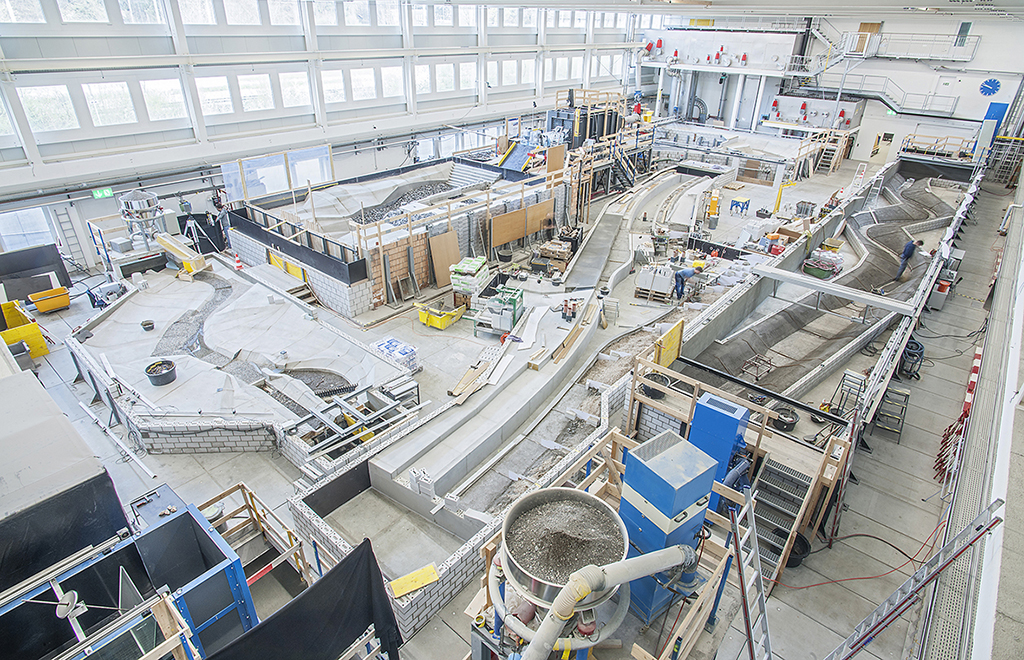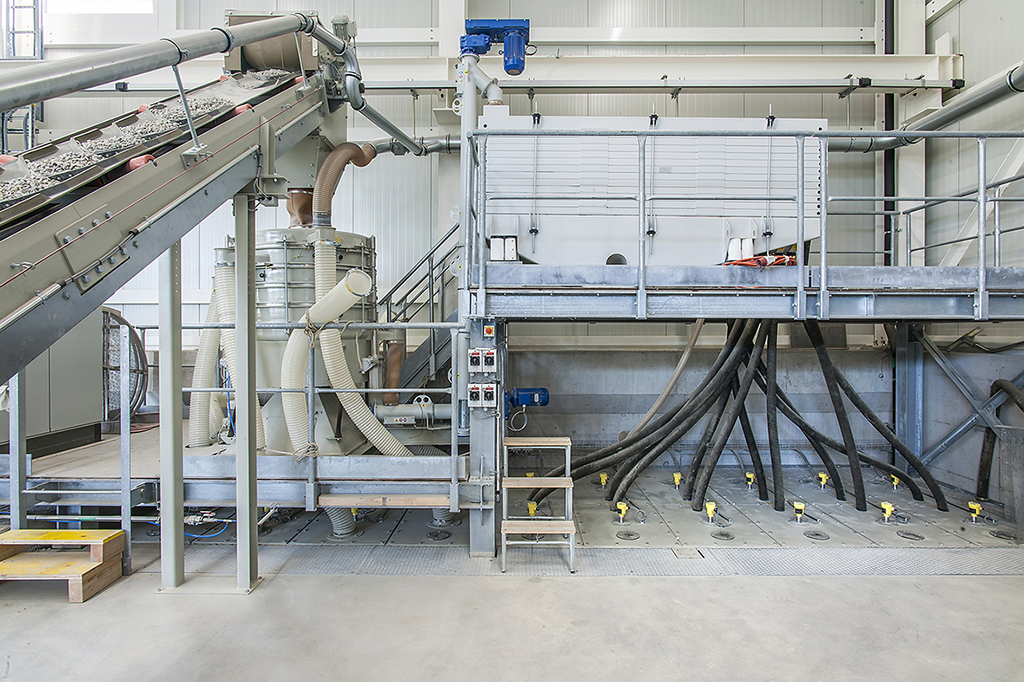Laboratory operations
The laboratory of hydraulics is used as model space for fundamental research and teaching purposes, but also for third-party funded applied research projects in the area of hydropower, flood protection and river restoration. The laboratory building is 9 m high and has a total testing area of 1'540 m2. The supply and return pipes of the water cycle used for the physical models are located in the basement below the main laboratory floor. Other infrastructure elements such as pumps, high-level tanks and structures for the sediment management (depots, sieving machine, drying oven) are located at either end of the laboratory. Workshops and utility rooms are placed in an annex next to the lab.
The labortory can make use of two separated water cycles to supply water to the models. A clear water cycle guarantees the visualization of the flow as well as specific measurements. The turbid water cycle is accessed for river engineering models with a movable bed and sediment supply, where the water is clouded by suspended sediments. The total discharge capacity amounts to 1'300 l/s for clear water and 300 l/s for turbid water.
The permanent installations for basic research and teaching purposes such as channels and flumes usually have their own individual closed water cycle. Of particular note is the ethohydraulic flume, which is equipped with a cooling system in order to ensure the optimal environment for tests with living fish species.
Since a natural river bed consists of various sand and gravel fractions, an indiviual sediment mixture is produced for every river engineering model for the reproduction of the river bed and the correct modelling of sediment supply. For this purpose sand and gravel of different grain sizes used for the mixtures are stored seperately in sediment depots. A large installation with a fully automatic sieving machine is available for the sediment management of the laboratory.

